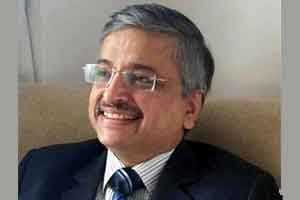- Home
- Medical news & Guidelines
- Anesthesiology
- Cardiology and CTVS
- Critical Care
- Dentistry
- Dermatology
- Diabetes and Endocrinology
- ENT
- Gastroenterology
- Medicine
- Nephrology
- Neurology
- Obstretics-Gynaecology
- Oncology
- Ophthalmology
- Orthopaedics
- Pediatrics-Neonatology
- Psychiatry
- Pulmonology
- Radiology
- Surgery
- Urology
- Laboratory Medicine
- Diet
- Nursing
- Paramedical
- Physiotherapy
- Health news
- Fact Check
- Bone Health Fact Check
- Brain Health Fact Check
- Cancer Related Fact Check
- Child Care Fact Check
- Dental and oral health fact check
- Diabetes and metabolic health fact check
- Diet and Nutrition Fact Check
- Eye and ENT Care Fact Check
- Fitness fact check
- Gut health fact check
- Heart health fact check
- Kidney health fact check
- Medical education fact check
- Men's health fact check
- Respiratory fact check
- Skin and hair care fact check
- Vaccine and Immunization fact check
- Women's health fact check
- AYUSH
- State News
- Andaman and Nicobar Islands
- Andhra Pradesh
- Arunachal Pradesh
- Assam
- Bihar
- Chandigarh
- Chattisgarh
- Dadra and Nagar Haveli
- Daman and Diu
- Delhi
- Goa
- Gujarat
- Haryana
- Himachal Pradesh
- Jammu & Kashmir
- Jharkhand
- Karnataka
- Kerala
- Ladakh
- Lakshadweep
- Madhya Pradesh
- Maharashtra
- Manipur
- Meghalaya
- Mizoram
- Nagaland
- Odisha
- Puducherry
- Punjab
- Rajasthan
- Sikkim
- Tamil Nadu
- Telangana
- Tripura
- Uttar Pradesh
- Uttrakhand
- West Bengal
- Medical Education
- Industry
Masks, air purifiers not effective: AIIMS Director, Randeep Guleria

New Delhi: As air pollution hit alarming levels in Delhi, major city hospitals today experienced a surge in the number of patients complaining of respiratory problems with the AIIMS chief comparing the situation to the killer Great Smog of London in 1952.
While people were seen wearing masks to protect themselves outdoors, there was a spurt in fresh cases in hospitals and conditions of patients with history of asthma, Chronic Obstructive Pulmonary Disorder (COPD) and cardiovascular diseases deteriorated.
"Patients have started coming to the OPDs with complaints of breathlessness, coughing, sneezing, tightness in chest, allergy and asthma complications. There is about 20 percent rise in patients seeking treatment due to respiratory and cardiac issues," said Guleria.
He also compared the situation in the national capital with the Great Smog of 1952 in London and said pollution is at such a severe level that patients with respiratory and cardiac problems may develop life-threatening conditions. On December 5, 1952, a thick yellow smog brought London to a standstill for four days and is estimated to have killed more than 4,000 people.
"This is a silent killer," he said. Guleria said the condition of those already having advanced heart diseases or pulmonary problems deteriorates as pollution levels go up and they land up in the ICUs and have to be put on ventilator.
Guleria said the current smog situation in the national capital is same to last years post-Diwali situation and expressed fear that around 25,000 to 30,000 people may lose their lives in Delhi-NCR due to diseases exacerbated by pollution.
The Centre-run Safdarjung hospital also witnessed an increase in patients with respiratory problems in its OPDs and casualty department over the past two days, said J C Suri, professor and head of pulmonary medicine at the hospital.
He said the immediate effects are cough, throat infections and pneumonia, but in the long term the results could be disastrous as one could also develop lung cancer.
"Elderly and children are more likely to develop infections and allergies due to smog and pollution. So they should avoid going out during early morning and at dusk hours when the toxic level is at its peak," Suri said.
"Also, when pollution levels rise, the condition of those suffering from Chronic Obstructive Pulmonary Disease (COPD) or asthma or heart disease worsens," he added.
According to Vivek Nangia, Director and HOD, Pulmonology, Fortis Flt Lt Rajan Dhall Hospital, there has been a 25 per cent increase in OPD footfall in the past 24 hours of patients with various kinds of respiratory stress.
"These comprise not only first-time walk-in patients but also repeat patients. The situation is grim with the disease being more protracted due to the severely poor air quality.
"This is leading to longer recovery times, more dependence on steroids, antibiotics and inhalers. The situation will continue till the pollution levels are brought under control," Nangia said.
Rajesh Chawla, Senior Consultant (Critical care, pulmonary and sleep disorders) at Indraprastha Apollo hospitals suggested that people avoid indulging in outdoor physical activity and wear good quality masks and keep their eyes, nose and mouth covered.
The Indian Medical Association said the capital was witnessing a "public health emergency" and appealed to the government to stop outdoor sports and other such activities in schools to protect the health of children.


